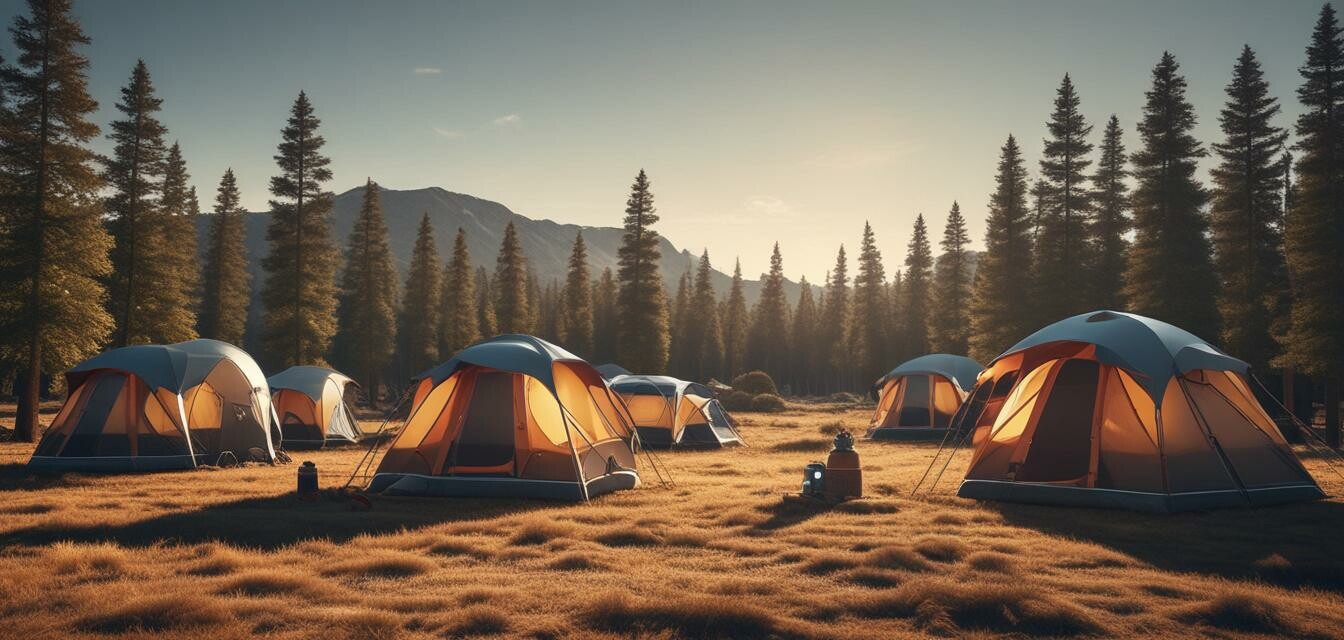
Creating a Solar-Powered Campsite: Step-by-Step Guide
Key Takeaways
- Location matters: Choose an area with maximum sunlight exposure.
- Plan your layout: Organize your solar equipment efficiently.
- Maintenance: Regularly check and clean solar panels for optimal performance.
- Compatibility: Ensure all solar devices work well together.
Setting up a solar-powered campsite is not only a fantastic way to enjoy nature but also a step towards sustainable camping. By using solar-powered equipment, you can ensure that your camping experience remains eco-friendly while providing the energy you need. In this guide, we will go through the steps to create your solar-powered campsite efficiently.
Benefits of a solar-powered campsite
- Reduced reliance on fossil fuels
- Lower environmental impact
- Cost savings on energy over time
- Convenience of access to renewable energy source
Step 1: Choose the right location
Your campsite's location is critical for maximizing solar energy. Here are some tips:
- Avoid shaded areas from trees or hills.
- Look for open areas that receive direct sunlight for most of the day.
- Check the weather forecast to anticipate cloud cover.
Step 2: Gather your solar equipment
Before heading out, make sure to gather all necessary solar equipment:
- Portable solar panels
- Solar camping tents
- Solar lanterns and lights
- Solar-powered chargers
- Solar cooking equipment
If you're looking for recommendations or wish to explore various options, check our segment on Portable Solar Panels.
Step 3: Set up your solar panels
Setting up solar panels correctly ensures that you get the most energy throughout your camping trip. Follow these guidelines:
- Position the panels where they will receive the most sunlight.
- Angle them at about 30-45 degrees for maximum solar absorption.
- Ensure that the panels are secured to avoid movement by wind.
Step 4: Organize your campsite layout
Effortlessly managing space can make your camping experience enjoyable:
- Central area: Designate a central spot for solar charging, cooking, and socializing.
- Lighting: Position your solar lanterns to illuminate pathways and common areas.
- Sleeping quarters: Ensure your sleeping area is conveniently located for easy access to solar lighting.
Step 5: Maintain your solar equipment
To keep your solar setup efficient for the entire trip, remember:
- Regularly wipe down solar panels to remove dirt and debris.
- Check the connections to ensure everything is working well.
- Store equipment properly when not in use to avoid damage.
For additional information on maintaining solar gear, visit our Expert Tips section.
Step 6: Enjoy your solar-powered camping experience
Now that your campsite is set up, enjoy all the benefits of renewable energy:
- Cook with solar grills
- Light up your evenings with solar lanterns
- Charge your devices using solar chargers
Common challenges and solutions
Even with proper planning, you might face some challenges:
| Challenge | Solution |
|---|---|
| Insufficient sunlight | Consider using portable battery packs that can store excess energy. |
| Complex setup | Practice setting up your gear at home to streamline the process outdoors. |
| Equipment failure | Always carry a backup power source, like a power bank. |
Pros
- Environmentally friendly
- Reduced energy costs over time
- Enhances overall camping experience
Cons
- High initial investment
- Dependence on sunlight availability
- Setup and maintenance required
Tips for beginners
- Start with a basic solar setup before upgrading.
- Familiarize yourself with your solar equipment prior to camping.
- Plan your meals around available solar cooking times.
Conclusion
Creating a solar-powered campsite allows you to enjoy the outdoors while prioritizing sustainability. By following these steps, you'll have a comfortable, energy-efficient site for your next adventure. The transition to solar energy may seem challenging at first, but the experience is worth the effort, offering both convenience and environmental benefits.
For more information on solar-powered camping products, visit our sections on Solar Camping Tents, Solar Cookers & Grills, and Solar Lanterns & Lights.